What is a high color rendering LED
A high color rendering LED is a semiconductor-based white light emitter designed with the ability to faithfully reproduce the colors of objects illuminated by the light source. It emits white light that is intended to drive the positive interpretation of the world surrounding us. Color is an expression of light. White light is a mix of many different colors which correspond to radiant energy at different wavelengths in the visible portion of the electromagnetic spectrum from 380 to 780 nm. High color rendering lighting endeavors to deliver white light that contains an appreciable amount of radiant energy at all or the most important wavelengths. By correctly interacting with the spectral reflectance function of objects, the high color rendering white light can accurately reveal their color personalities. The color rendering performance of a light source is often characterized by its color rendering index (CRI), an internationally established metric. As a result, a light source providing excellent color rendition is commonly referred to as a high CRI light source.
The science behind color
Color is a perceptual response that is hardwired with the spectral power of light. Human perception of color vision starts with the responses of the cone systems. When optical radiation enters the eye, three types of cone photoreceptors in the back surface of the retina convert light into neural signals based on the spectral region of the radiant energy. Each of the three types of wavelength-sensitive retinal cells has different sensitivity as a function of wavelength. Perceptions of red (around 600 nm) is performed by L-cones that are maximally long-wavelength sensitive. Perception of green (around 550 nm) is performed by M-cones that are maximally medium-wavelength sensitive. Perception of blue (around 450 nm) is performed by S-cones that are maximally short-wavelength sensitive. While the three types of cones have their own spectral regions of peak sensitivity, the sensitivity of each type overlap significantly in wavelength. The neural signal provided by the cones contains no information about the specific wavelength of light. The response of a single photoreceptor therefore does not correspond to individual color. The color of a physical stimulus can only be established by the combined responses of all three types of cone photoreceptors. The brain synthesizes neural signals from all the photoreceptors and interpret them into a color perception. Any color perceived corresponds to a tri-stimulus value, which describes how much it stimulates the three types of wavelength-sensitive cones. Many different color combinations can have the same tri-stimulus value and the same perceived color. White light, for example, can be different mixtures of colors (wavelengths).
Color reproduction
Not all white light is created equal. This leads to varied color rendering capabilities of white light created by different light sources. Color is not inherent in objects. The color of an object we perceive is based on our brain’s interpretation of light that the object reflects. White light of different wavelength (color) combinations can render different object colors. The color stimulus function depends upon both the light spectrum and the spectral reflectance function of an object. When white light does not contain radiant energy at wavelengths that match the object’s spectral reflectance function, the “true” color will not be revealed in reflectance of objects. In order to reproduce the natural color appearance of all objects around us, the light sources that illuminate these objects must deliver adequate amounts of radiant power fairly broadly across the entire visible spectrum. The human vision system has evolved to function under natural daylight which is created through the interaction between the earth’s atmosphere and extraterrestrial solar radiation. Natural daylight distributes its radiant energy uniformly throughout the visible spectrum, which enables faithful reproduction of colors of objects around us. But how about artificial light sources?
The degradation of color quality since the advent of fluorescent lighting
For most of the history of artificial lighting, incandescent lamps had offered the human world the affordable luxury of high color rendering lighting despite their low efficacy, short lifespan and an overly red bias. These thermal radiators deliver a spectrum of warm white light with radiant power at every wavelength from 380 to 780 nm. However, the color quality of artificial light sources slumped since the introduction of fluorescent lamps. The new technology allowed manipulation of the spectral power distribution (SPD) of the light source. There’s a fundamental tradeoff between color rendering accuracy and lamp efficacy with regard to fluorescent lighting. Since energy efficient lighting has been an unwavering priority from past till now and in the future, the color quality is frequently compromised to improve luminous efficacy. With the advent of light emitting diode (LED) technology, the prospects of what can be done with respect to efficiency and color quality have expanded tremendously. But even with LED lighting, the tradeoff between color rendering quality and luminous efficacy has remained. Despite an astonishingly highly efficacy that can be achieved without negating color quality, the lighting industry, regulatory authorities and government agencies don’t want to leave anything to chance. As a result, the low color quality standard developed to cater to fluorescent lighting remains alive today.
The importance of accurate color rendition
For many people, many applications and many industries, correct color perception is of great significance. Color rendition has a profound effect on the subjective judgement of a space regarding naturalness, vividness, preference, atmosphere, normalness, and visual acuity. The lighting in a home, office and hospitality space may be deemed of high color quality if it enables a visually pleasant environment, facilitates social interactions, enhances aesthetic perceptions, and improves task performance. Artists and designers understand the integral relationship between color and light. Museums, art galleries and showrooms rely on successful lighting to reveal color characteristics of objects on display. Color can have a transformative effect on visual satisfaction of consumers and merchandise attractiveness in retail environments. Accurate color rendition has critical functional significance in healthcare work. Color is a diagnostic indicator. Subtle differences in color must be very accurately rendered in order to facilitate correct medical analysis and treatment. The color rendering performance of surgical lighting systems can even mean the difference between life and death. The color discrimination ability of a light source is one of the critical considerations in maximizing productivity, efficiency, accuracy and safety in industrial facilities.
Color rendering index (CRI)
The color quality uncertainty of spectrally controllable light sources led to the growing awareness of accurately quantifying the color rendition characteristics of a light source. The color rendering index (CRI) is the benchmark metric for color rendering quality evaluation. It is a color fidelity metric intended to indicate a light source’s ability to reproduce the colors of objects faithfully in comparison with a reference illuminant of the same correlated color temperature (CCT). The CRI value is a single number based on the average color difference for eight reflectance samples. The general color rendering index, Ra, is given as the average of Ri for eight of the fourteen test samples and has a maximum value of 100. The higher the CRI (Ra) value, the better the color fidelity. Daylight has the highest CRI (Ra of approximately 100). Incandescent lamps have a minimum Ra value of 97. By comparison, fluorescent lamps have a CRI in the range of 70-80. However, CRI is not a statistically representative and reliable metric. The eight color samples that it uses to calculate the general index are all of low to medium chromatic saturation. Six additional samples, R9 to R14, are excluded from the calculation. Of these color samples, four are saturated colors, one represents the color of foliage, and one represents an average Caucasian skin color. Rendition of these colors, in particular the deep red sample, is of strong interest in a wide array of applications. Thus, a common practice is to list R9 individually as a supplement to the general CRI.
Alternative color metric systems
For a light source to be considered high color rendering, a minimum CRI (Ra) value of 95 and a minimum R9 value of 50 are required. CRI, however, is a purely color fidelity metric, which is often equated to the ability of a light source to render colors “naturally.” it penalizes all color shifts from the reference illuminant equally and thus does not include the saturation factor. Color saturation contributes to the preference and appreciation of users’ perception of lighting in a given application. A modest increase in saturation relative to a reference source may improve the ability of a light source to render objects with perceptions of “colorfulness,” “attractiveness,” and “likeness”, and “vividness.” There are many use cases where color preference is more important than color reproduction. Human complexion, fresh food, red meat, painting, apparel, jewelry, home decoration, plants and flowers have a strong correlation to perceptions of saturation and preference. CRI also confers limited ability to predict the ability of a light source to reveal a large number of colors such that the human eye can distinguish between them when viewed simultaneously. To address the CRI deficiencies, it is necessary to adopt alternative color metric systems such as IES TM-30, the Color Quality Scale (CQS), and the Gamut Area Index (GAI). Among these systems, TM-30 is a significant improvement over the CRI. It is offered as an evaluation framework that provides a suite of color rendering characterizations for quantifying both overall average properties (color fidelity, gamut area) and hue-specific property (fidelity, chroma shift, hue shift) of a light source.
How do LEDs work
A light-emitting diode or LED is a semiconductor p-n junction which emits light through injection electroluminescence. It is constructed as a light-emitting stack that consists of two oppositely doped gallium nitride (GaN) layers and an interposed active region of indium gallium nitride (InGaN) layer. When a bias is applied across the doped layers in the forward direction, electrons in the n-GaN layer and holes in the p-GaN layer move across the junction boundary into the active region. The intracrystalline recombination of these electrons and holes results in energy transitions in electrons from the conduction band to the valence band. During the energy transition, the excess energy in the electron is released in the form of a photon. A photon is a quantum of radiant energy or a packet of light. Its wavelength is determined by the difference in energy between the conduction band and valence band, which is known as the semiconductor bandgap. The direct and wide bandgap of GaN-based LEDs enables a high quantum efficiency of electroluminescence at the blue-violet end of the visible spectrum. The semiconductor p-n junction takes the form of an n-GaN/InGaN/p-GaN heterojunction which is epitaxially grown on a substrate such as sapphire, silicon carbide (SiC), silicon (Si), and GaN.
White light generation
The light-emitting stack based on GaN epitaxy, which is often called an LED die or LED chip, by nature emits light in a narrow spectral range of 10 nm to 30 nm. In order to produce white light, the narrow bandwidth must be broadened. The phosphor-converted LED architecture is by far the universal choice for producing white light with monochromatic LEDs. The bandgap of the monochromatic emitter (LED die) is carefully manipulated such that it emits short wavelength light. A phosphor down-converter is then used to spectrally shift part or all of the short wavelength light into longer wavelength light. The majority of phosphor-converted LEDs utilize an a blue-emitting InGaN chip to pump phosphors within the semiconductor package. The phosphor down-converter absorbs a portion of the blue light and Stokes shifts it to light of longer wavelengths. The spectrally shifted light then mixes with the primary blue light that escapes without going through a down conversion process to produce a good approximation of white light. This type of white LEDs are knows as blue-pump LEDs. A second type of phosphor-converted LEDs are violet-pump LEDs that use near-ultraviolet-producing InGaN chips to pump a mix of red, green and blue phosphors. In these packages, all primary light (electroluminescence) undergoes the down-conversion process.
Spectral power distribution (SPD)
An LED can be characterized as having a particular spectral power distribution (SPD), which interacts with the spectral reflectance function of objects and determines how object colors are rendered. With the phosphor-converted LED architecture, achieving white light of the highest possible color quality requires a proper wavelength conversion architecture as well as thoughtful control of material composition and layer thickness of the phosphor down-converter. It makes sense to spectrally engineer blue-pump LEDs for an intended color rendering performance. However, the SPD of these LEDs often exhibit a narrow blue spike and pronounced spectral gaps due to the incomplete down-conversion of electroluminescence. To provide the most accurate color rendition, the light source must deliver balanced amounts of radiant power in different parts of the visible spectrum. In violet-pump LEDs, all electroluminescence is spectrally shifted to longer wavelength light in exact proportions by the RGB down-converter. The resulting white light has superior color rendering due to the balanced distribution of radiant power in different parts of the visible light spectrum.
Package platforms
High color rendering LEDs are constructed on various package platforms. Most mid-power LEDs are plastic leaded chip carrier (PLCC) packages that use a metal lead frame as a carrier medium for the LED die. The lead frame is surrounded by a polymer cavity which is filled with a phosphor containing encapsulant. Chip-on-board (COB) LEDs bond many electrically interconnected LED dies directly onto a metal core printed circuit board (PCB) or ceramic substrate, which are then covered with a phosphor-mixed silicone. High-power ceramic-based LEDs attach a large LED die or multiple LED dies to a ceramic substrate with a conformal silicone/phosphor coating on top of the die. A CSP LED or chip-scale package has a flip-chip structure that eliminates wire bonding, removes the need for lead frames or ceramic substrates, and has both electrodes on the underside of the p-GaN layer of the LED die. The LED package platform and materials of construction drive the luminous efficacy, lumen maintenance, and color stability of the LED. Special attention should be paid to the thermal performance of the phosphor and binder materials. Within high color rendering LED packages, the phosphor down-conversion process produces a significant amount of Stokes heat, which creates high thermal stresses.

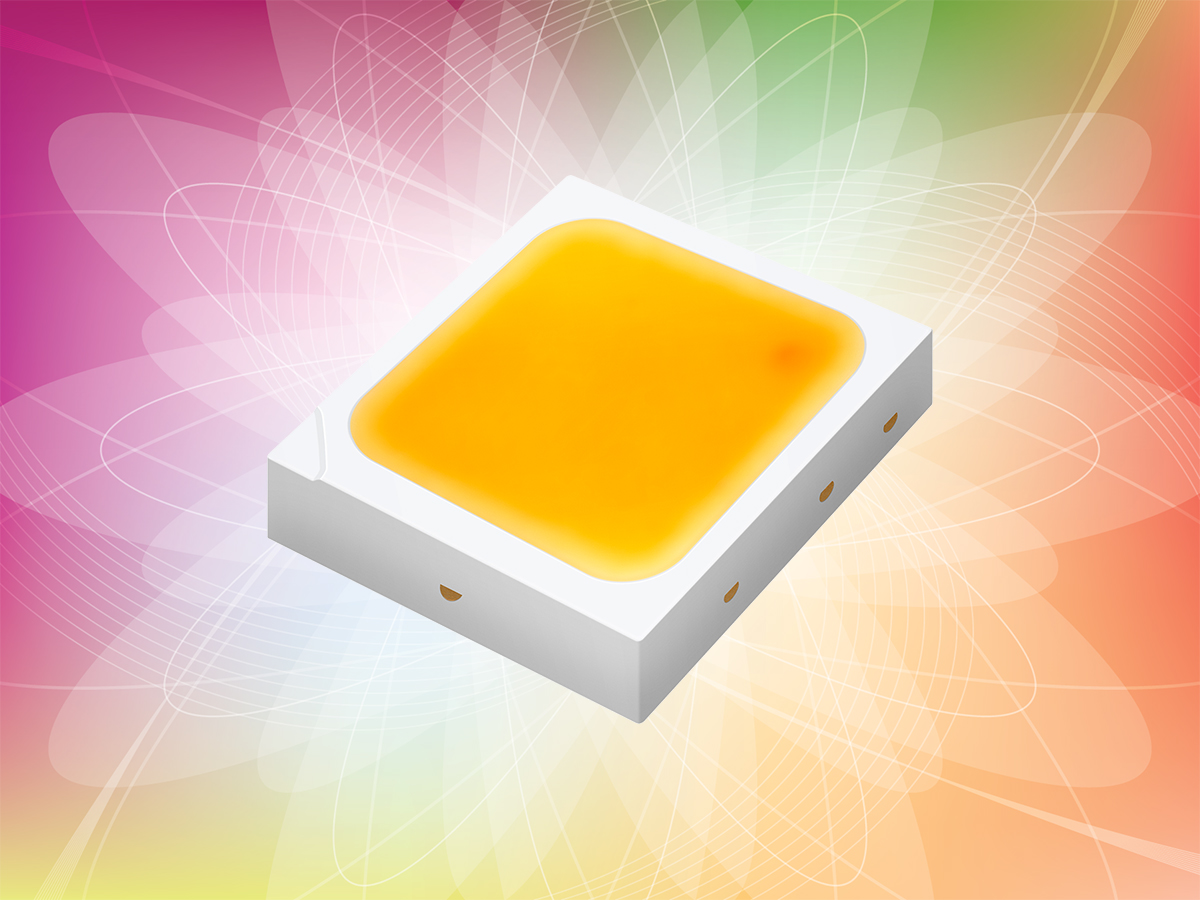

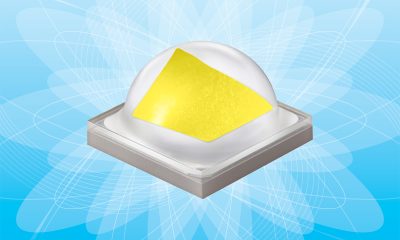
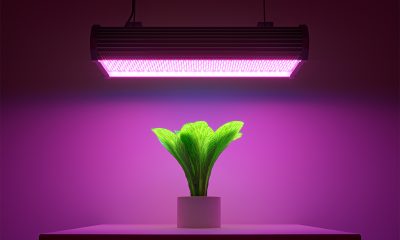


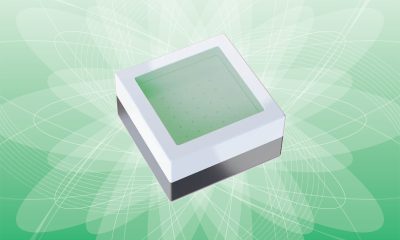
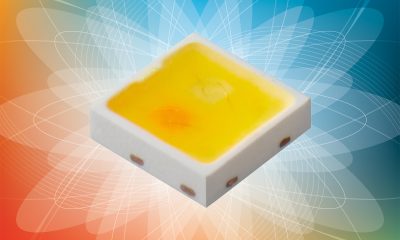
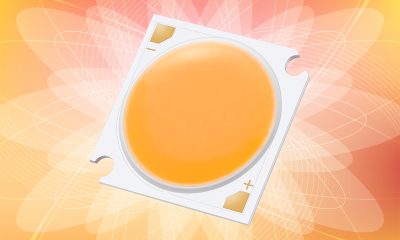

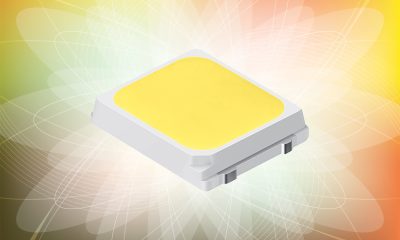






Loading...